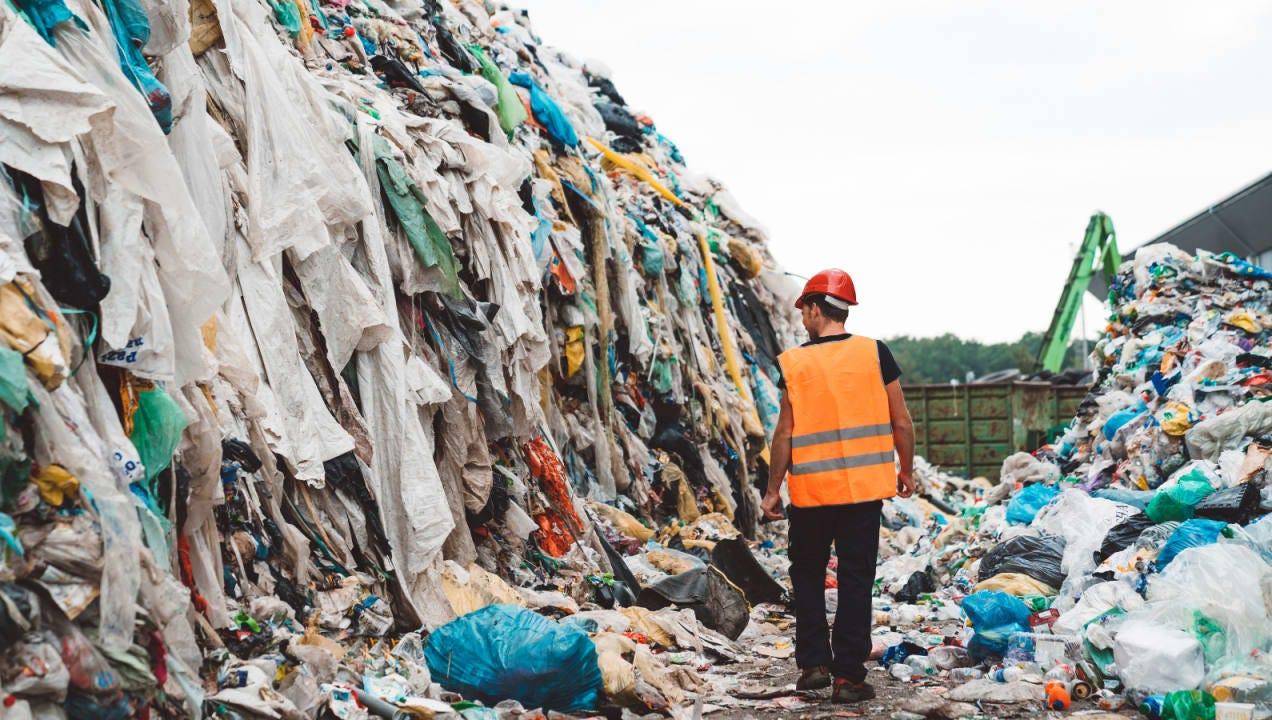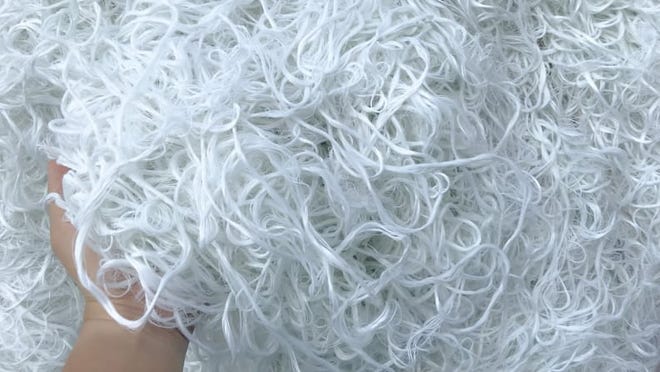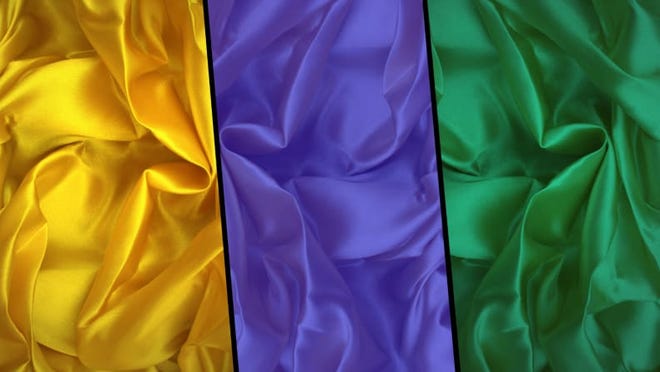
Buying new clothes can be fun, but it can also be costly—to both your wallet and the environment. The fashion industry accounts for 10% of the carbon emissions in the world, making it a major offender in the current climate crisis. While we can buy better and reach for more sustainable fabrics, it’s also worth understanding which fabrics to avoid when you can.
Many retailers produce their clothing with a blend of synthetic fibers. Because synthetics extract chemicals from petroleum, this links the fashion industry with the transportation and oil industry, which produces the largest greenhouse gas emissions in the United States. All synthetic fibers are plastic and can take up to 200 years to decompose.
Additionally, laundering clothing made with synthetic fibers in a washing machine releases thousands of microplastic fibers. These pass through our local waterways, sift through sewage treatment plants, and ultimately end up dumped into local rivers and lakes. According to a 2011 study, it’s estimated that the wastewater of a household washer can carry roughly 1,900 individual fibers from a single garment. These microplastics pollute our seas, harming fish and underwater ecosystems. An estimated 35% of all microplastics found in oceans come from clothing, and a study conducted in 2018 found that of all fish caught in the northwest Atlantic Ocean, 73% contained plastic in their stomachs.
If you’re passionate about choosing clothes that are more environmentally friendly, there are a few types of materials to try to avoid when shopping. These are five of the least sustainable fabrics you’ll find in apparel—and alternatives to look for when you shop.
1. Polyester

According to Textile Exchange, a nonprofit group that encourages ethical textile standards, polyester is the most used synthetic fiber in the world. It accounted for approximately 52% of the global fiber production in 2019 at 58 million metric tons produced. Like all synthetics, polyester is cheap to mass produce, making it the chosen material for fast fashion to quickly churn out new items.
Nearly 70 million barrels of oil a year are used to make polyester fibers alone. The amount of energy it requires to make polyester is high, too—it takes 125 megajoules of energy to produce one kilogram of polyester, which is more than double that of cotton's energy consumption for the same amount. Polyester production can also emit dangerous carbon dioxide and methane—two greenhouse gases that contribute to global warming—into the atmosphere.
What you should buy instead: Opt for clothing made from recycled polyester, which gives existing synthetic fabrics a second life. Recycled polyester comes from leftover and unused scraps created in the textile manufacturing process. Rather than throwing those scraps out and leaving them in a landfill where they may not decompose for hundreds of years, they're sorted and reused for future garments. Clothing that claims to be made from recycled polyester is often resewn with other materials, such as cotton or a small percentage of conventional polyester.
2. Nylon

Nylon makes up 12% of all synthetic fabrics produced in the world. Similar to polyester, nylon is responsible for releasing microplastics into our waterways and oceans.
During nylon production, nitrous oxide, also known as laughing gas, is released into the air. This compressed liquefied gas poses as an occupational risk to factory workers, with side effects including dizziness, dissociation, loss of balance, and impaired memory and cognition. This toxic gas is released through adipic acid, an essential chemical used in creating nylon. Nylon production is blamed for an increase of nitrous oxide released into the earth’s atmosphere, contributing substantially to global warming.
What you should buy instead: Similar to polyester, you can buy recycled nylon clothing. Alternatively, clothing made from biodegradable nylon can help accelerate the fabric's degrading process. For example, nylon made with Amni Soul Eco allows the fibers to break down and decompose in five years, compared to up to 200 years for conventional nylon.
3. Acrylic

Acrylic, a common material used to spin yarn for sweaters, is one of the worst offenders of releasing microplastics when washed. According to a year-long study by Plymouth University in the UK, acrylic fabric releases up to 730,000 microparticles per single wash cycle.
Acrylic is made with acrylonitrile, a highly flammable and toxic liquid that can cause harm to the eyes, skin, lungs, and nervous system. This poses a hazard to laborers who come in contact with the liquid. A study on the relation between health risks and acrylonitrile reported a 25% increase of lung cancer risk among factory workers who were chronically exposed to this chemical.
What you should buy instead: Acrylic closely resembles the properties and appearance of wool and is often used as a cheaper replacement for it. Rather than reaching for clothes made with acrylic, choose those made from wool. Wool is acquired by shearing sheep and other livestock once a year, and is sometimes taken from the pelts of slaughtered animals.
Although the farming industry has its own wide array of climate issues and ethical concerns, wool is an organic material, meaning it will biodegrade into the earth. Because sheep can regrow its fleece yearly, wool is considered a renewable fabric. Vegans can opt for organic cotton flannel or fleece, which has a feeling similar to acrylic.
4. Conventional cotton
Cotton is the most used natural fiber in the world, with 26,172,678 tons of cotton produced annually. It’s the second most used fabric for apparel and footwear, behind polyester.
It can take 2,700 liters of water to produce enough cotton for a single T-shirt. Cotton cultivation requires the use of fertilizers and pesticides that may contribute to soil and ocean pollution. Chemicals used in clothing dyes for cotton fabrics also pose potential health risks to factory garment workers. According to the EPA, excess water runoff by agricultural irrigation can affect local water sources by causing erosion and transporting potentially harmful chemicals into waterways. The EPA also cites agricultural water runoff as the leading cause of water quality changes to rivers and streams, the third leading source for lakes, and the second largest source of impairments to wetlands.
What you should buy instead: Organic cotton is a more sustainable option. Its cultivation uses less chemical fertilizers and less irrigation. Eighty percent of organic cotton farms are also rain-fed, which results in less wastewater compared to the production of conventional cotton.
5. Rayon

Rayon, also known as viscose, is a semi-synthetic fiber made from natural cellulose from the wood pulp of beech, pine, and eucalyptus trees. It has a similar feel to silk and is a popular fabric choice by fast-fashion retailers. Although rayon fabric is derived from natural sources, carbon sulfide is used to break down the pulp into fibers. Carbon sulfide is harmful to factory workers, and has been linked to acute and chronic poisoning. Additionally, up to 30% of carbon sulfide is lost during the process of making rayon, which can end up contaminating our oceans.
In addition to chemical processing, rayon’s raw material is sometimes derived from eucalyptus trees, many species of which are considered to be endangered.
What you should buy instead: Lyocell, or Tencel, is a less chemically intensive form of rayon. Its production takes half as much water as conventional cotton, and because it's made from wood pulp, it's considered biodegradable—as long as it's naturally dyed. Rather than using carbon sulfide, lyocell relies on a solvent that is reused for further production.
